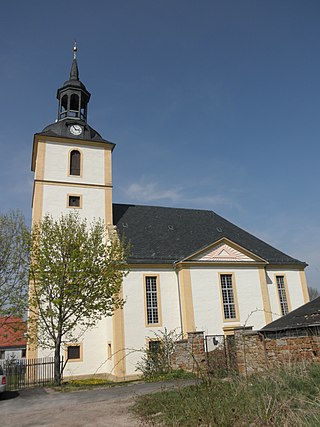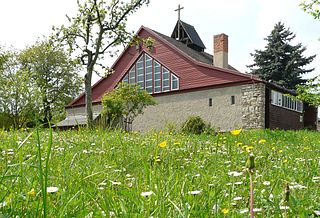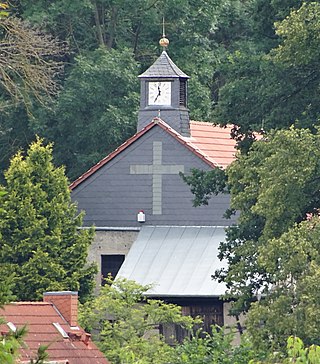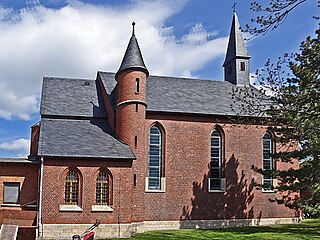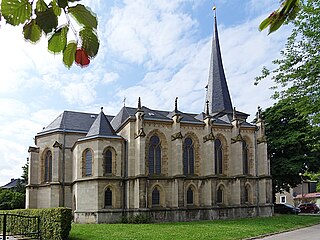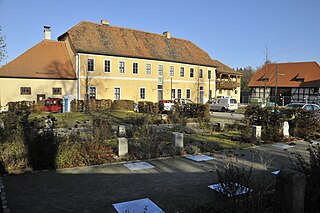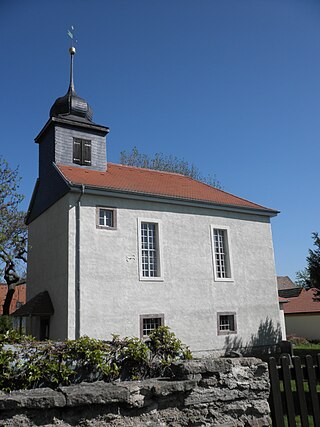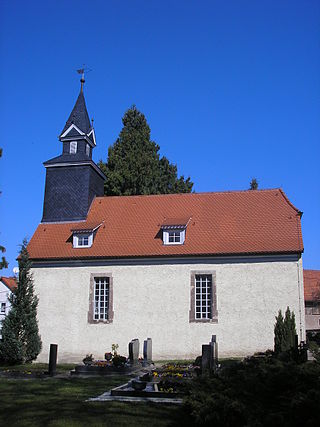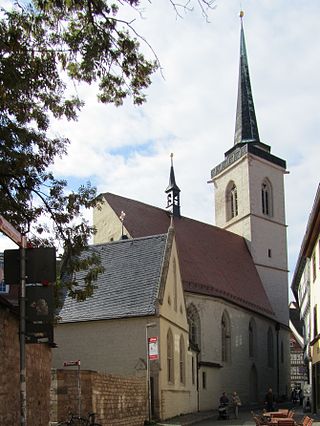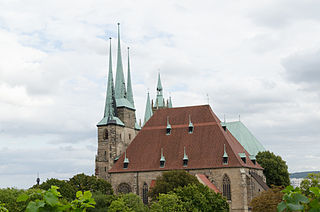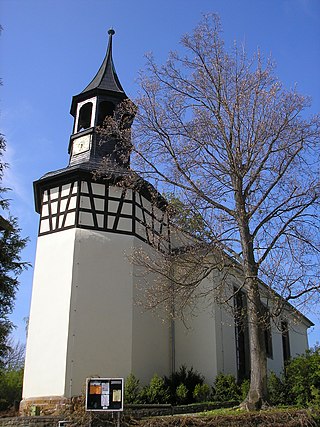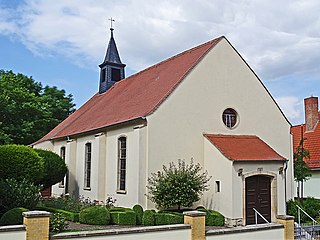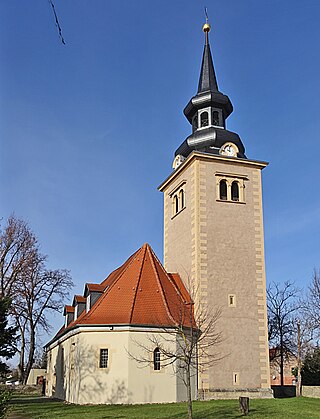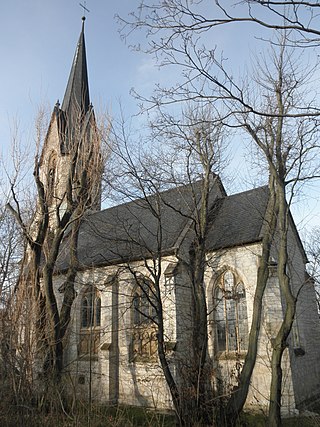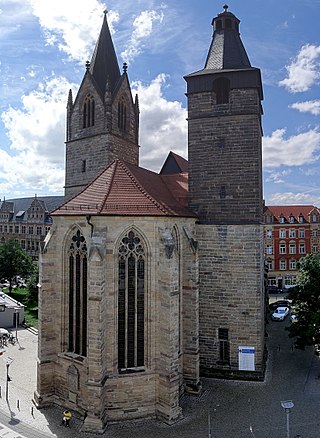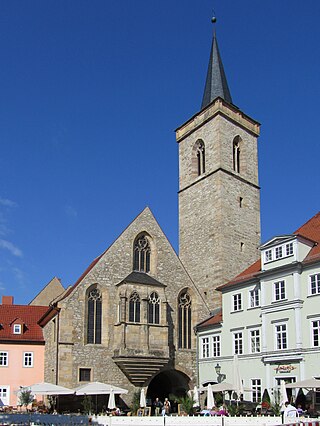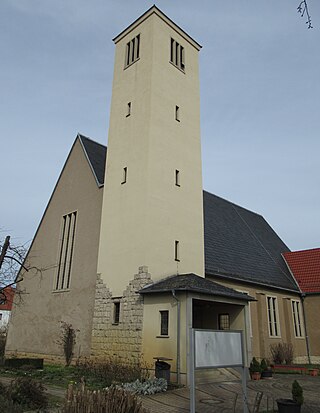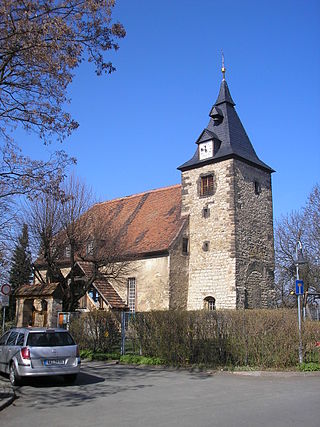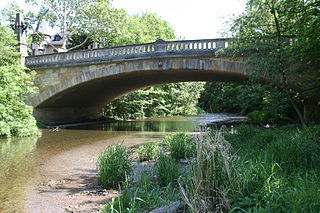67 Sights in Erfurt, Germany (with Map and Images)
Legend
Welcome to your journey through the most beautiful sights in Erfurt, Germany! Whether you want to discover the city's historical treasures or experience its modern highlights, you'll find everything your heart desires here. Be inspired by our selection and plan your unforgettable adventure in Erfurt. Dive into the diversity of this fascinating city and discover everything it has to offer.
Sightseeing Tours in Erfurt1. Krämerbrücke
The Krämerbrücke is a medieval arch bridge in the city of Erfurt, in Thuringia, central Germany, which is lined with half-timbered shops and houses on both sides of a cobblestone street. It is one of the few remaining bridges in the world that have inhabited buildings. It has been continuously inhabited for over 500 years, longer than any other bridge in Europe. The stone, pedestrian bridge, which dates from 1325, is one of the oldest secular structures in Erfurt. It spans the Breitstrom, a branch of Gera River, and connects two town squares – Benediktsplatz and Wenigemarkt.
2. Evangelisches Augustinerkloster zu Erfurt
St. Augustine's Monastery in Erfurt, central Germany, is a former church and friary complex dating from the 13th century. The site is almost one hectare in size. It was built by Augustinian friars, an order of the Catholic Church. It is most well known as the former home of Martin Luther (1483–1546), the father of the Reformation, who lived there as a friar from 1505 until 1511.
3. Lutherkirche

The Luther Church in Erfurt, together with the Martini Church in Ilversgehofen, belongs to the parish of Martini-Luther in the Erfurt church district of the Evangelical Church in Central Germany. It was built during the Weimar Republic in Johannesvorstadt on Magdeburger Allee between the former tram depot and the former police academy. The church is a rectangular building with an oval hall and a west tower about 50 meters high, its architecture shows features of Expressionism and Art Deco. It is a listed building and is a station on Lutherweg.
4. Kirchenamt der Ev. Kirche Mitteldeutschland (EKM)
The Collegium Maius was the main building of the Old University in Erfurt, which existed from 1392 to 1816. A new building built in the old style from 1998 onwards is located in Michaelisstraße in the centre of Erfurt's old town, in the so-called "Latin Quarter", after the destruction of the old building in 1945. The old building housed the rectorate, lecture halls and the large ballroom of the university. In 2011, the regional church office of the Evangelical Church in Central Germany, which was created by merger in 2009, moved into the new Collegium Maius.
5. Kaisersaal
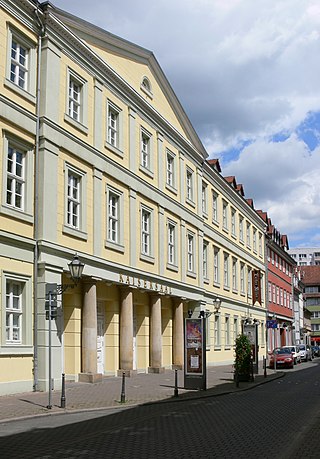
The Kaisersaal is a traditional cultural and congress centre in the old town of Erfurt. The Erfurt Princes' Congress of Emperors Napoleon I and Tsar Alexander I took place here in 1808 and the Erfurt party congress of the SPD in 1891. On April 12, 1946, Communists and Social Democrats passed the "Resolution on the Unification of the KPD and SPD to form the Socialist Unity Party of Germany SED" at a joint meeting at the local level in the Kaisersaal. The Kaisersaal is located in a listed ensemble at Futterstraße 15/16.
6. Forsthaus Willrode
The building complex now called Forsthaus Willroda, listed in the list of castles and palaces in Thuringia, is a complex in the southeast of the Thuringian state capital Erfurt. It lies in the Willroda Forest between Egstedt and Schellroda in the area of the district of Egstedt. The Willroda forester's lodge consists of several buildings that were built as a fortified estate and later rebuilt and expanded as a hunting lodge, then as a forester's lodge.
7. Zitadelle Petersberg
Petersberg Citadel in Erfurt, central Germany, is one of the largest and best-preserved town fortresses in Europe. The citadel was built on Petersberg hill, in the north-western part of the old town centre from 1665, when Erfurt was governed by the Electorate of Mainz. It is surrounded by over two kilometres of stone walls and is 36 hectares in size.
8. Sankt Martin
The Roman Catholic branch church of St. Martin is located in the Dittelstedt district of the Thuringian state capital Erfurt. It is a branch church of the parish of St. Nikolaus Erfurt-Melchendorf in the Erfurt deanery of the Diocese of Erfurt. It bears the patronage of St. Martin of Tours.
9. Hirschgarten
The Hirschgarten is a partly park-like green space in the old town of Erfurt. It was the first public green space in the city. Today it consists of the historic Hirschgarten from the 18th century and an adjoining part to the west, which was redesigned on a demolition site in the years 2007 to 2009.
10. Neue Synagoge
The New Synagogue is the synagogue of Erfurt, the capital of Thuringia, Germany. It is located on Juri-Gagarin-Ring and is the only (used) synagogue in Thuringia and one of only two synagogues built in GDR times. It serves as a prayer room for the Jewish State Community of Thuringia, which has around 850 members. In addition to her, there are the old and the small synagogue in Erfurt, both of which are no longer used for church services.
11. Anger 1
The Anger 1 shopping gallery is a shopping centre at the north-eastern end of the Anger in the centre of Erfurt and consists of an old Art Nouveau building and a modern new building with a multi-storey car park.
12. St. Benignus
The Church of St. Benignus is a Protestant village church in the Erfurt area. It is located in the district of Bischleben in the so-called Mauergäßchen, which connects the streets In der Linde and Backhausstraße. Together with Möbisburg and Rhoda, it now belongs to the Protestant parish of Bischleben.
13. Erinnerungsort Topf & Söhne
The Topf & Söhne memorial site is a place of remembrance with an exhibition and adjoining rooms for educational work in the former administration building of the J. A. Topf and Sons company in Erfurt, which supplied part of the technical equipment for the Auschwitz-Birkenau extermination camp and other concentration camps.
14. Sankt Nikolaus
The Roman Catholic parish church of St. Nicholas is located in the Melchendorf district of the Thuringian state capital Erfurt. It is the parish church of the parish of St. Nikolaus Erfurt-Melchendorf in the deanery of Erfurt in the Diocese of Erfurt. It bears the patronage of St. Nicholas of Myra.
15. Westliches Wachhaus
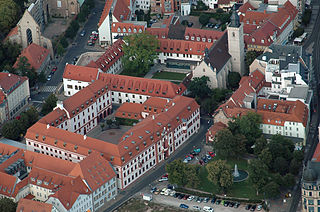
The Electoral Mainz Lieutenancy is a baroque, three-storey four-winged complex around an inner courtyard from the 16th to 18th centuries. It is located on the corner of Regierungsstrasse and Meister-Eckehart-Strasse in the centre of Erfurt.
16. Gustav Adolf Kirche
The Gustav-Adolf-Kirche is a Protestant parish church in the Herrenberg district of Erfurt, Germany. It belongs to the parish of Erfurt-Südost in the Erfurt church district of the Evangelical Church in Central Germany.
17. Stadtmuseum
The Haus zum Stockfisch is an important Renaissance town house at Johannesstraße 169 in the old town of Erfurt. It was acquired by the city at the beginning of the 20th century and has been used as a museum ever since, and since 1974 it has been the seat of the city museum.
18. St. Dionysius
The St. Dionysius Church is the Evangelical Lutheran church of Salomonsborn, a district of the Thuringian state capital Erfurt. It belongs to the parish of Marbach-Salomonsborn in the Erfurt church district of the Evangelical Church in Central Germany.
19. Sankt Andreas
The Church of St. Andreas in Ermstedt, a district of Erfurt, is the most important building in the village in terms of art history. After the fall of the Berlin Wall, it was extensively restored both inside and out.
20. Predigerkirche
The Predigerkirche is a Lutheran church in Erfurt, central Germany. It is a monastic church to the Dominican friary, Predigerkloster, adjacent to the church. The name of the Preachers' Church derives from the designation of the Dominicans as "Preacher Brothers". The Predigerkirche was originally built by the Dominican Order in the 13th century, when the mystic Meister Eckhart was prior here. The original building was modified in 1340–50, and the bell tower was built between 1447 and 1488. The church became Protestant after the Reformation. Around 1806, the Predigerkirche was used as a prisoner-of-war camp, which led to damage to the interior and the equipment. Repairs were made around 1826.
21. Alte Oper

The Alte Oper is a venue in Erfurt, Thuringia, Germany. It is located in the southwest of the old town in Gorkistraße, just under 400 meters south of the cathedral. The house has a hall with 970 seats, a revolving stage and 32 trains.
22. Neue Mühle
The Neue Mühle is a technical museum on the Schlösserbrücke in Erfurt, Thuringia. It is located on a tributary of the small river Gera, which operates the mill's hydroelectric power plant. It contains a grain mill with an undershot Zuppinger water wheel and is the last functioning mill of 60 in the city. It has borne its name as the "New Mill" since its reconstruction after the fire of 1735. Particularly interesting is the preserved material flow over all floors by means of a belt bucket elevator. In addition to a milling process, historic roller mills, several plansifters and a mill brake elevator can be seen.
23. Brunnenkirche

The Roman Catholic fountain church is located in the old town of the Thuringian state capital Erfurt. It is used by the Erfurt Augustinian Convent and belongs to the Erfurt Deanery of the Diocese of Erfurt.
24. Sankt Viti
The church of St. Viti at Vitusplatz 4 is one of the two Protestant village churches in the Erfurt district of Gispersleben. It is under the patronage of Saint Vitus and today belongs to the Protestant church district of Erfurt. The building is a listed building.
25. Christuskirche (SELK)
The Evangelical Lutheran Church of Christ is a church in the Brühlervorstadt district of Erfurt. It serves as a place of worship for the Erfurt congregation of the Independent Evangelical Lutheran Church (SELK) and belongs to the church district of Saxony-Thuringia.
26. Erthal-Obelisk
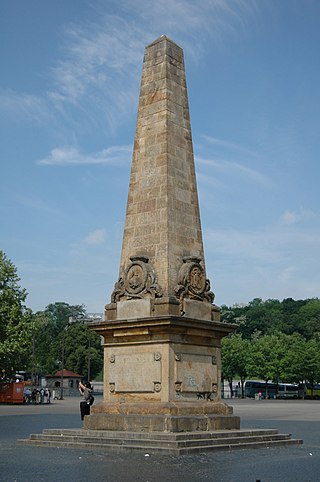
The Erthal Obelisk is an 18-metre-high obelisk on the cathedral square in Erfurt. It was erected around 1777 on the occasion of the first visit of the Archbishop of Mainz and Erfurt city lord Friedrich Karl Joseph von Erthal, making it one of the oldest monuments in Erfurt. The construction costs were 1120 thalers, of which the citizens raised 858 in a collection. The work of a master builder who has not survived is made of Wandersleben sandstone and has a square base made of granite with a laurel-wreathed effigy, name, coat of arms and initials, orders and decorations. In earlier times, a dedication in the stone explained that the "loyal subjects of the local city to the best father of the country" had built this monument "in eternal memory".
27. St. Trinitatis
The castle church of St. Trinitatis is located in the Molsdorf district of the city of Erfurt in Thuringia. It belongs to the parish of Ichtershausen-Holzhausen in the church district of Arnstadt-Ilmenau of the Evangelical Church in Central Germany.
28. Cyriakkapelle
The Cyriak Chapel in Erfurt is a so-called diaspora chapel designed by the architect Otto Bartning. Built in 1950, it is part of the series church follow-up program of the Bartning-Notkirchen. It is located in the southwest of Erfurt in the Cyriak settlement and is a church of the Evangelical Preachers' Community.
29. Sankt Pankratius
The village church of St. Pankratius is located in the district of Hochstedt in the city of Erfurt in Thuringia. The parish belongs to the parish of Vieselbach in the Weimar church district of the Evangelical Church in Central Germany. The original church burned down in 1978 and was rebuilt in a simplified form.
30. Sankt Josef
The Roman Catholic parish church of St. Josef is located in the Ilversgehofen district of the Thuringian state capital Erfurt. It is the parish church of the parish of St. Josef Erfurt in the deanery of Erfurt in the Diocese of Erfurt. It bears the patronage of St. Joseph of Nazareth.
31. Theater Erfurt

The Theater Erfurt is a German municipal theatre located in Erfurt, the capital of Thuringia. The main stage is in a building in the Brühlervorstadt, completed in 2003. The theatre offers musical theatre and concerts, played by the Philharmonisches Orchester Erfurt. Ballet and plays are offered by guest performances. The company organizes the annual open air festival DomStufen. The theatre's current Generalintendant, Guy Montavon, has held the post since 2002.
32. Heilig-Kreuz-Kirche
The Holy Cross Church is located in the Vieselbach district of the city of Erfurt in Thuringia. The parish belongs to the parish of Vieselbach in the Weimar church district of the Evangelical Church in Central Germany.
33. Thüringer Grenzstein-Lapidarium
The Willrode Lapidarium is a collection of historical boundary and boundary stones on the grounds of the Willroda forester's lodge near the Thuringian state capital of Erfurt.Since 2009, an exhibition of Thuringian boundary stones has been set up on the western courtyard side of the estate. The exhibitor is the Thuringia State Association of the DVW – Society for Geodesy, Geoinformation and Land Management (DVW). There are currently about thirteen boundary and municipal stones with well-labeled explanatory boards. The collection presents demarcations of the external borders of historical sovereign territories. Initials at the head of the stones or their coat of arms indicate the respective lordship. For example, "KP" stands for the Kingdom of Prussia, while "HG" refers to the Duchy of (Saxe) Gotha. Other municipal stones show the initials of the municipal area or the consecutive numbering.
34. Sankt Bonifatius
The Roman Catholic, listed branch church of St. Bonifatius is located in the Hochheim district of the Thuringian state capital Erfurt. It is a branch church of the parish of St. Nikolaus Erfurt-Melchendorf in the Erfurt deanery of the Diocese of Erfurt. It bears the patronage of St. Boniface.
35. Dorfkirche Wallichen
The Protestant village church of Wallichen stands within a cemetery in the district of Wallichen in the city of Erfurt in Thuringia on the Way of St. James from Görlitz to Vacha. The parish belongs to the parish of Vieselbach in the Weimar church district of the Evangelical Church in Central Germany.
36. Sankt Ulrich
The Evangelical Church of St. Ulrich is a listed church building in Alach, a district of Erfurt in Thuringia. The congregation belongs to the Erfurt church district in the Evangelical Church of Central Germany.
37. Roßbrücke
The Roßbrücke is a road bridge in the city centre of Erfurt, the capital of Thuringia, and is one of the oldest preserved natural stone bridges in the city. It is located on Herrmannsplatz, spans the Walkstrom, a tributary of the Gera, and serves the development traffic of the western city centre.
38. Barfüßerkirche
The Barfüßerkirche in the historical city centre of Erfurt in Thuringia, Germany, belonged to the most important church buildings of the city and was one of the most elaborate mendicant churches in Germany until its extensive destruction by bombing in 1944. It was mainly built in the 14th century as a monastery church of the Franciscans, who were also called Barfüßer. The choir was restored in the 1950s; beside the nave's ruin, it is situated west of the Schlösserbrücke bridge on the right bank of the Breitstrom, a branch of the Gera river.
39. Sankt Elisabeth
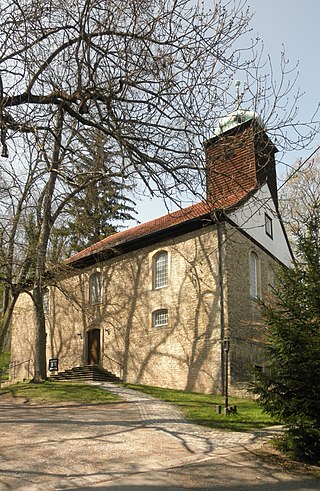
The Roman Catholic branch church of St. Elisabeth is located in the district of Stedten an der Gera in the Thuringian state capital Erfurt. It is a branch church of the parish of St. Nikolaus Erfurt-Melchendorf in the Erfurt deanery of the Diocese of Erfurt. It bears the patronage of St. Elisabeth of Thuringia.
40. Thomaskirche
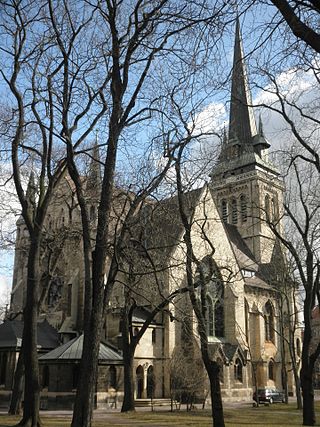
St Thomas' Church in the city of Erfurt in Thuringia, Germany, is a United Protestant parish church. It was built in Gothic Revival style in a park on Schillerstraße in the Löbervorstadt district in 1900–1902 to replace the Old St Thomas' Church, which had become too small. It has the second-highest steeple in the city at 72 metres (236 ft) and houses a Gothic altar retable from 1445, which is one of Erfurt's four valuable carved altars.
41. Reglerkirche
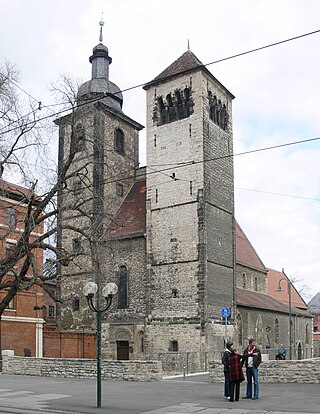
The Reglerkirche is a church building in the historical centre of Erfurt in Thuringia, Germany. It serves a Lutheran parish as a place of worship and is one of the larger churches in the city's old part. In times of East Germany, it was considered a centre of church music in Erfurt.
42. Sankt Simon und Juda
The Protestant village church of St. Simon and Judas is located in the Rohda district of the Thuringian state capital Erfurt. The parish belongs to the parish association of Klettbach in the Weimar church district of the Evangelical Church in Central Germany.
43. Sankt Martini

St Martin's Church in the west of the historical centre of the city of Erfurt in Thuringia, Germany, is a Roman Catholic church building. Today, it is a subsidiary church of the Catholic parish of St Lawrence's.
44. Allerheiligenkirche
All Saints' Church in the city of Erfurt in Thuringia, Germany, is a small Roman Catholic church building dating from the 12th to 14th century. The Gothic hall church is located at the fork of Allerheiligenstraße and Marktstraße in the historical centre of Erfurt. It has an irregular floor plan and, at 53 metres, the highest church tower in the old part of the city. Since 2007, it has been the first Roman Catholic church in central Germany to house a columbarium.
45. Sankt Severi
St Severus' Church in the city of Erfurt in Thuringia, Germany, is a Roman Catholic church building. It stands on the Domberg directly next to St Mary's Cathedral. As a unique architectural ensemble, both churches together form the city's landmark. Due to its unusual form, which seems to anticipate the late Gothic hall church, St Severus' Church is one of the most important Gothic buildings in Germany. The bones of the church patron Severus of Ravenna rest in an artistically very significant sarcophagus.
46. Schottenkirche

The Schottenkirche in the historical part of the city of Erfurt in Thuringia, Germany, is a Roman Catholic church building dating back to the 12th century. The Romanesque basilica belonged to a former Celtic monastery of St James. Today, it is a subsidiary church of the Catholic parish of St Lawrence's Church.
47. Sankt Gotthardt
The Church of St. Gotthardt is a village church built in 1211 in the Erfurt district of Marbach. It belongs to the parish of Marbach-Salomonsborn in the Protestant church district of Erfurt. The building is a listed building.
48. St. Dionysius
The Evangelical Lutheran Dionysius Church stands on the eastern part of a fortified plateau of Möbisburg, which rises above the east bank of the Gera, a part of Möbisburg-Rhoda, a district of the city of Erfurt, the state capital of Thuringia. The parish of Erfurt-Möbisburg belongs to the Erfurt-Bischleben parish association in the Erfurt church district of the Evangelical Church in Central Germany.
49. St. Maria
The Roman Catholic branch church of St. Maria Rosenkranzkönigin is located in the Vieselbach district of the Thuringian state capital Erfurt. It is a branch church of the parish of St. Nikolaus Erfurt-Melchendorf in the Erfurt deanery of the Diocese of Erfurt. She bears the patronage of Mary Queen of the Rosary.
Wikipedia: St. Maria Rosenkranzkönigin (Vieselbach) (DE), Website
50. Sankt Michaelis
The Evangelical Lutheran St. Michael's Church is located in Windischholzhausen, a district of Erfurt, the state capital of Thuringia. The parish of Erfurt-Windischholzhausen belongs to the Erfurt-Windischholzhausen parish in the Erfurt church district of the Evangelical Church in Central Germany.
51. Michaeliskirche
St Michael's Church in the historical centre of the city of Erfurt in Thuringia, Germany, is a Gothic church building. It belongs to the Evangelische Stadtmission Erfurt and is the university church of the University of Erfurt.
52. Haus Vaterland
Haus Vaterland in Erfurt, the state capital of Thuringia, is located at Regierungsstraße 72. Haus Vaterland, the former Weimar escort house in Erfurt, houses the European Information Centre and offices of the Thuringian State Chancellery. The building is a protected architectural monument.
53. Sankt Lorenz

St Lawrence's Church in the city of Erfurt in Thuringia, Germany, is a Roman Catholic parish church dating from around 1300. The Gothic hall church is located on the northern edge of Anger square and at the beginning of the Schlösserstraße in the centre of the historical part of Erfurt.
54. Sankt Severinus
The Evangelical Lutheran Church of St. Severinus is located in Mittelhausen, a district of the city of Erfurt in Thuringia. The parish of Mittelhausen belongs to the parish of Riethnordhausen in the church district of Apolda-Buttstädt of the Evangelical Church in Central Germany.
55. Sankt Johannes
The Protestant St. John's Church is located on the Angerberg of Hochheim, a district of Erfurt in Thuringia. The parish of Erfurt-Hochheim belongs to the parish association of Hochheim-Schmira in the church district of Erfurt of the Evangelical Church in Central Germany.
56. St. Nikolai
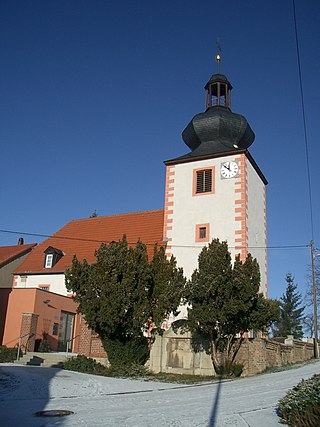
The Evangelical-Lutheran St. Nicholas Church, dedicated to St. Nicholas, is located in Waltersleben, a district of the state capital Erfurt of Thuringia. The parish of Waltersleben belongs to the parish association of Egstedt in the church district of Erfurt of the Evangelical Church in Central Germany.
57. Kaufmannskirche - Sankt Gregorii
The Kaufmannskirche is a church building in the historical centre of the city of Erfurt in Thuringia, Germany. It is located at the north end of Erfurt's Anger square and has been Lutheran since 1521.
58. Bartholomäusturm
St Bartholomew's Church in the historical city centre of Erfurt in Thuringia, Germany, was a Gothic church building at the western Anger square. Today, only its tower, the Bartholomäusturm, remains; since 1979, it has been housing a carillon.
59. Sankt Andreas
St Andrew's Church is a Gothic church building at Andreasstraße in the historical centre of the city of Erfurt in Thuringia, Germany. The surrounding quarter Andreasviertel and the northern district Andreasvorstadt are named after it. St Andrew's Church is now a Lutheran parish church.
60. Sankt Crucis
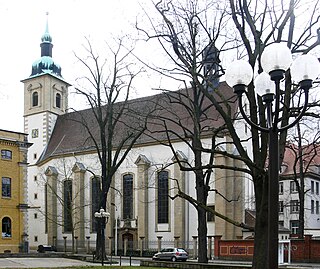
The Neuwerkskirche at the edge of the historical part of the city of Erfurt in Thuringia, Germany, is a Roman Catholic church building dating from the 15th century. Today, it is a branch church of the Catholic parish of St Lawrence's Church.
61. Porta Coeli Kirche
The Evangelical-Lutheran, listed village church Porta Coeli stands at Himmelpfortenweg 7 in Kühnhausen, a district of the city of Erfurt in Thuringia. The parish of Erfurt-Kühnhausen belongs to the Erfurt church district of the Evangelical Church in Central Germany.
62. Ägidienkirche
St Giles' Church in the historical centre of the city of Erfurt in Thuringia, Germany, forms the eastern entrance from Wenigemarkt to the Krämerbrücke with its archway. The single-nave Gothic church building is one of the former two bridgehead churches. At the western end stood the Benediktikirche since the 11th century, which was demolished in 1890 and is now only remembered by the name of Benediktsplatz.
63. St. Antonius
The Roman Catholic branch church of St. Anthony of Padua is located in the Gispersleben district of the Thuringian state capital Erfurt. It is a branch church of the parish of St. Josef Erfurt in the Erfurt deanery of the Diocese of Erfurt and bears the patronage of St. Anthony of Padua.
64. Sankt Wigbert
St Wigbert's Church in the city of Erfurt in Thuringia, Germany, is a Roman Catholic church building dating from the 15th century. Today, it is a subsidiary church of the Catholic parish of St Lawrence's Church.
65. Zur Himmelspforte
The Protestant Church of Niedernissa is an originally Romanesque, Baroque rebuilt choir tower church in the district of Niedernissa in Erfurt in Thuringia. It belongs to the Evangelical Parish Association of Erfurt-Windischholzhausen in the Evangelical Church District of Erfurt of the Evangelical Church in Central Germany.
66. Pförtchenbrücke
The Pförtchenbrücke is a road bridge that spans the flood ditch of the Gera in Erfurt. The structure, which has been a listed building since 1981, is described as the most beautiful bridge in Erfurt.
67. Augustinerkirche
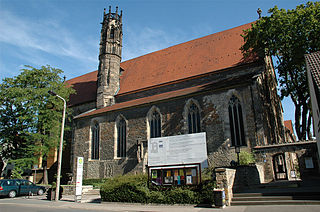
The Augustinian monastery in Erfurt is a former monastery of the Augustinian hermits, built from 1277 onwards, where Martin Luther lived as a monk between 1505 and 1511. After the Reformation, the monastery became the property of the Protestant Church in 1525; In 1559 it was secularized by the city of Erfurt. In 1945, parts of the monastery were destroyed in an air raid, but soon rebuilt to such an extent that the complex could be put to a new use, it became an official Luther memorial and parts served as a preacher's school. After the fall of the Berlin Wall, around 1994, the Augustinian monastery became the official seat of the Erfurt-Nordhausen Provost's Office. The building is mainly used as a conference and meeting centre. The monastery was extensively restored and modernized from 2000 onwards. It is a recognized cultural monument according to the Thuringian Monument Protection Act.
Share
How likely are you to recommend us?
Disclaimer Please be aware of your surroundings and do not enter private property. We are not liable for any damages that occur during the tours.

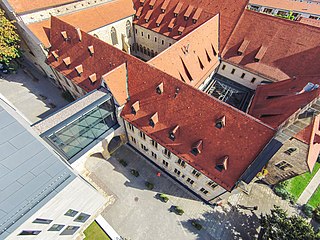
.jpg)
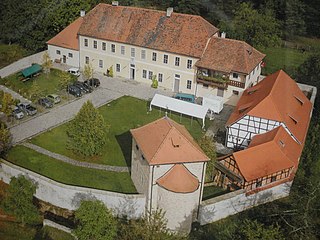
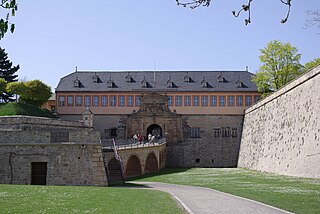
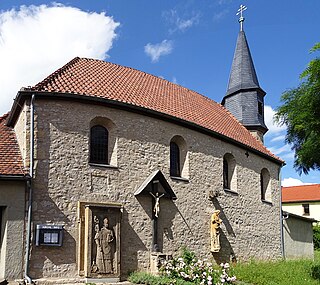

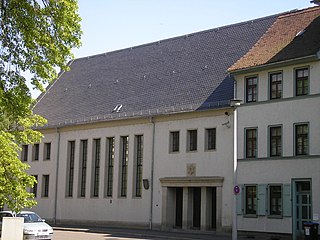
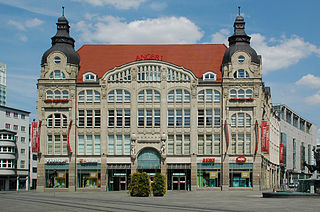
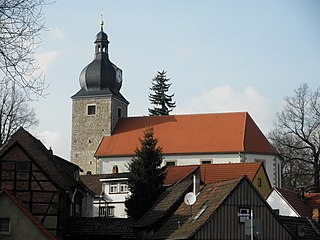
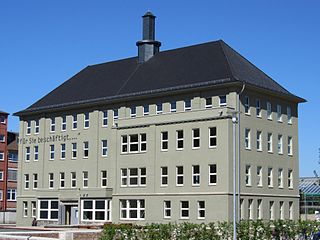

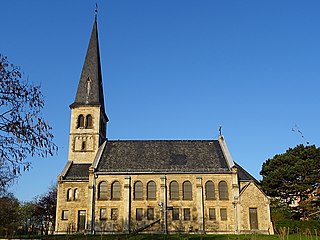
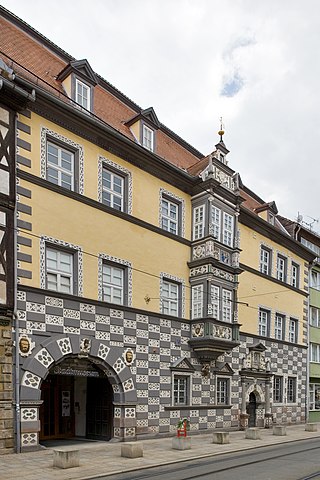
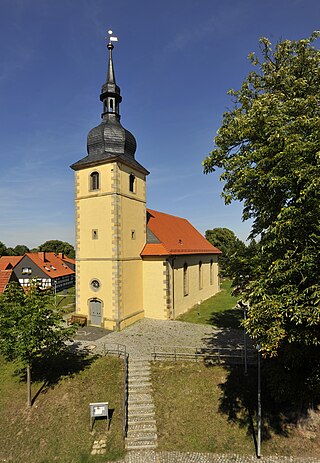

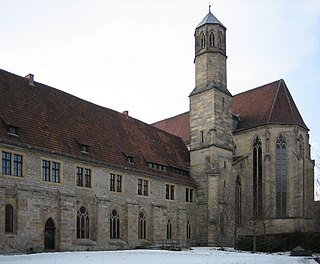

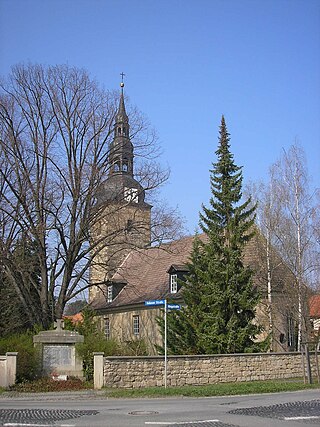
.jpg)
